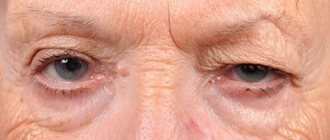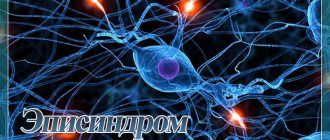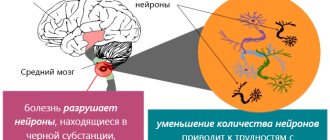Home » Department of Neurology » Diseases » Minor chorea
Minor chorea is a disease of rheumatic etiology, characterized by movement disorders.
Damage to the body by the rheumatic process begins with the penetration of group A hemolytic streptococcus bacteria into the body. This microbe from foci of infection (for example, in chronic tonsillitis from the palatine tonsils) penetrates the bloodstream and spreads in various tissues. The pathogenesis of rheumatic lesions is based on connective tissue pathology. Damage to heart valves and joints may develop. Penetration of the pathogen into the central nervous system can provoke dysfunction of the cerebral cortex, cerebellum, and basal ganglia (neurorheumatism). Large and small vessels of the brain are damaged with the development of vasculitis and thrombusculitis. As a result of the development of degenerative processes, coordination of movements and muscle tone are disrupted in these areas of the nervous system.
After the discovery of antibiotics, the incidence of chorea minor is up to 10% of all neurological diseases. The disease develops more often in girls than in boys, and mainly in the autumn-winter period. The duration of the disease is from 3 to 6 weeks. Short-term relapses may occur over a long period of time after the height of the disease (for example, during pregnancy). In rare cases, deaths have occurred due to pathological effects on the cardiovascular system.
Lesser chorea - Types
Depending on the clinical course, the following are distinguished:
- Classic version of the course of minor chorea
- An atypical variant of the course of chorea: erased, low-symptomatic, sluggish form of the disease
- paralytic minor chorea
- pseudohysterical minor chorea
The course of the disease can be:
- Latent (hidden)
- Subacute
- Acute
- Recurrent
Complications and prognosis
The prognosis for treatment of chorea largely depends on its type. Sydenham's chorea proceeds most favorably. The acute period of the disease most often covers a time period of about twelve weeks, after which the severity of symptoms subsides. The entire period of rheumatic chorea can last for a year, and in rare cases lasts longer.
Chorea of pregnancy is a special form of the disease, the course of which is greatly influenced by hormonal levels. The most unpleasant circumstance is the appearance of a striking set of signs of pathology - the so-called choreic storm. In this case, it is necessary to decide on terminating the pregnancy to save the life of the mother.
Hormonal changes during pregnancy can provoke severe chorea
Senile chorea is a naturally progressive disease. However, in this case, the pathology can last quite a long time. Huntington's chorea has a poor prognosis in all cases. Death occurs after ten to fifteen years from the onset of the disease.
Minor chorea - Causes
Among the reasons for the development of chorea minor and the risk factors for this pathological process are the following:
- Hereditary predisposition
- Female
- Rheumatism
- Age from 6 to 15 years
- Previous streptococcal infection (for example, sore throat)
- Asthenic physique
- Psychological trauma
- Increased excitability of the child's nervous system
- Frequent sore throats
- Chronic tonsillitis
- Respiratory diseases
- Rheumatism
- Decreased immunity
- Carious teeth
Sydenham's disease
This type of chorea occurs in adolescence and childhood from 5 to 14 years, and develops against the background of rheumatism. In such cases, changes occur in the cerebral hemispheres, as well as in the trunk, cortex and membranes.
This disease can be combined simultaneously with diseases of the cardiovascular system.
The main symptoms of minor chorea include:
- high body temperature;
- movements become imprecise;
- lack of coordination in movements;
- the child’s behavior may be inappropriate – frowning for no reason, sticking out his tongue, grimacing, shrugging his shoulders;
- gait becomes bouncing;
- the child becomes irritable, whiny, and may quickly become tired and tired.
Infantile chorea is characterized by a gradual increase in symptoms and increased progression over time.
Very often, parents may not notice the manifestations of the disease and perceive such behavior as a prank. But very soon the symptoms begin to manifest themselves more strongly, which perplexes the parents. Sometimes minor chorea can occur with pain.
Lesser chorea - Symptoms
The development of minor chorea is accompanied by the following clinical signs:
- Twitching of arms and legs (trochaic hyperkinesis) on one side or symmetrical
- Twitching of facial muscles (grimacing, blinking, twitching of the corner of the mouth, wrinkling of the forehead)
- Muscle weakness
- Gait disturbance
- Shoulder Jerking
- Movement coordination disorder
- Head twitching
- Handwriting disorder
- Sleep disorders
- Seizures
- Speech impairment (lingual hyperkinesis)
- Difficulty swallowing (hyperkinesis of the laryngeal muscles)
- Intermittent breathing (diaphragmatic hyperkinesis)
- Emotional excitability
- Memory and attention disorders
- Increased fatigue, irritability
- Psychoses with auditory and visual hallucinations
Genington's disease
Huntington's chorea can occur at any age, but most often its onset occurs in people over 30 years of age. Such patients exhibit hyperkinesis, personality development disorders, and dementia.
After the onset of the disease, it may take a long time before any symptoms are noticed. Symptoms may increase in stages:
- the first manifestation of the disease is a slight facial twitching; the patient may open his mouth for no reason, frown, stick out his tongue or lick his lips;
- fingers take on a splayed appearance;
- statics and gait change; swallowing abilities and speech skills may be impaired;
- memory deteriorates, dementia may gradually develop;
- the patient cannot care for himself.
If any signs appear, the patient’s relatives and friends should sound the alarm in order to begin treatment on time.
Lesser chorea - Diagnosis in Israel
Diagnosis of minor chorea begins with collecting an anamnesis of the patient’s life and illness. The diagnosis is confirmed by a characteristic clinical picture in combination with certain research methods:
- Blood test - allows you to identify the content of markers of streptococcal infection in the body: antisteptolysin-O, rheumatoid factor, cyclic citrullinated peptide, C-reactive protein.
- Electromyography is a method that allows you to study the biopotentials of skeletal muscles. When recording the electrical activity of muscles during chorea minor, an elongation of potentials and asynchrony in their appearance are revealed.
- Electroencephalogram - reveals diffuse slow-wave bioelectrical activity of the brain.
- Computed tomography, magnetic resonance imaging, positron emission tomography help identify focal changes in the brain.
What diagnostic techniques are used?
Treatment is carried out by a specialist in the field of neurology. When contacting a professional expert for advice, the doctor will conduct a standard examination of the patient, talk with relatives to obtain complete information about the patient’s condition, and also write out directions for certain laboratory and diagnostic procedures. Medic actions:
- Collecting anamnesis to obtain information about the likelihood of rheumatic disorders.
- Search for symptoms of concomitant deviations from the norm.
- Mandates additional clinical testing.
Common methods for studying the human body suffering from chorea are:
- Collection of blood cells for testing.
- Electroencephalographic study.
- Cerebrospinal fluid analysis.
- Electromyographic examination.
- MRI scan or CT scan of the brain.
- PET evaluation.
Lesser chorea - Treatment in Israel
Israeli doctors have extensive experience in the treatment of chorea minor and can offer you the following treatment methods:
- Penicillin antibiotics (bicillin) are used to combat streptococcal infections.
- Non-steroidal anti-inflammatory drugs (sulindac, ketorolac, salicylic acid derivatives) - reduce inflammatory syndrome in tissues.
- Glucocorticoids (prednisolone) – prevents the development of edema and inflammation in tissues, and an allergic reaction.
- Sedatives, tranquilizers (benzodiazepines, barbiturates) - relieve neuropsychic tension.
- Neuroleptics are drugs that inhibit the transmission of dopamine (one of the neurotransmitters). Haloperidol is used in combination with aminazine and reserpine, which block the transport of dopamine in nerve endings.
- Dopamine competitor drugs (dopegit) - when taken, the drug binds to dopamine receptors, which prevents the attachment of the endogenous transmitter.
- Antihistamines (suprastin, diphenhydramine) - eliminate the allergic component of the disease.
- If there are risk factors (for example, chronic tonsillitis), preventive lavage is indicated, and if it is ineffective , removal of the tonsils.
- When stopping the acute stage of the process, a stay at the sanatorium resorts of the Dead Sea, famous for its healing and restorative effects, will have a positive effect on the patient’s body.
Lesser chorea is a disease that requires special attention from a doctor when identifying and treating it.
Attention! All form fields are required. Otherwise we will not receive your information. Alternatively use
How to get rid of chorea?
Currently, thanks to modern capabilities, specialists practicing in the field of neurology are able to find out in advance about the onset of the described disease without the presence of pronounced problems in the patient. To do this, you will need to undergo a study and visit a qualified neurologist or geneticist. Treatment of chorea minor:
- Taking sedative medications and immunosuppressants.
- The use of hormonal pharmacological agents, as well as components with anti-inflammatory and antibacterial effects.
- Medicines are prescribed to improve sleep, have anticonvulsant effects and antipsychotics.
Patient assistance
If chorea is confirmed, the doctor prescribes the following treatment:
- medications are prescribed that help absorb copper to a lesser extent, the excess of which is a consequence of genetic predisposition;
- Antibacterial therapy is prescribed for severe Genington's chorea;
- tranquilizers and neuroleptics reduce the manifestation of hyperkinesis, and also reduce emotional and intellectual disorders;
- drugs that normalize blood pressure levels, necessary for impaired blood supply to the brain;
- reducing the dosage or abandoning antiemetic medications prescribed by psychiatrists;
- for inflammatory processes in the brain, hormonal drugs are prescribed;
- in extreme cases, brain surgery is prescribed, after which the patient’s uncontrolled movements decrease.
Also, in addition to medications, vitamin therapy and physical therapy are prescribed as auxiliary methods that will help reduce the symptoms of the disease.
Treatment and rehabilitation is a very difficult process. When therapy is carried out at the initial stage of the disease, there is a chance to stop the progression of the disease.
What's the prognosis?
With timely treatment, the prognosis is positive and the disease ends in recovery. However, relapses cannot be ruled out. Exacerbations of the disease can be caused by repeated tonsillitis or a rheumatic process.
After an illness, asthenia may persist for a fairly long period. The main complications of the pathology include heart disease, aortic insufficiency, and mitral stenosis.
The disease is not fatal and, with proper treatment, does not pose a threat to the patient’s life. Death is possible in the event of a sudden failure in the functioning of the cardiovascular system, incompatible with life.
Differential diagnosis
- Hepatocerebral dystrophy: changes in the liver, the presence of Kayser-Fleischer rings (a rim around the cornea up to 3 mm of dark green color).
- Myoclonus is a short-term contraction or drop in muscle tone with clinical twitching of individual muscles. The patient’s condition depends on the prevalence, intensity, frequency, time, and number of myoclonus. More often, a large number of muscle groups are covered, perhaps even the entire body. The intensity ranges from almost imperceptible to the eye to myoclonus of the entire body with the patient falling.
There is myoclonus, depending on the time of day: it either appears only when awake, or appears during sleep.
- Neurosyphilis: a more often acquired disease, the presence of treponema pallidum in a serological study of blood and cerebrospinal fluid.
- Systemic lupus erythematosus: damage to the connective tissue, a varied clinical picture - a butterfly-shaped rash on the face, hair loss, joint damage, the appearance of LE cells characteristic of SLE in the blood, kidney damage (lupus nephritis).
- Hypoparathyroidism: changes in hormonal profile, clinical picture: dry skin, hair loss, conjunctivitis.
- Poisoning (carbon monoxide, mercury): does not cause problems, because there is a history of exposure to the toxin.
Pathological anatomy
Pathological changes in chorea consist of a degenerative-toxic process that affects both mesenchymal-vascular and ectodermal tissues of the brain. Changes in the mesenchymal parts concern the membranes, the latter are thickened, the nature of the tissue is cicatricial, hyaline; in the area of the basal ganglia, thickening and hyalinosis of the vascular walls are especially pronounced.
From ganglion marks, mainly small ganglion cells of the granular layer of the cortex, the molecular layer of the cerebellum, and cells of the subthalamic nuclei are degenerated, while there is no significant glial proliferation. In the neostriatum, the degeneration of small ganglion cells is especially pronounced, although in very acute and severe infections large ganglion cells also suffer.
In 10% of cases with chorea, vascular-inflammatory changes are detected.
1.What is Huntingon's chorea?
Huntington's chorea is a severe neurodegenerative disease that is inherited and always progresses with age. The brain changes it causes lead to inevitable disability, since the increasing symptoms combine choreic hyperkinesis with mental disorders.
Huntington's chorea is a rare pathology (1 case per 10 thousand population), however, inheritance mechanisms make the likelihood of its development quite high among members of the same family. It has been noted that paternal transmission of pathology aggravates the course of the disease, which manifests itself at an earlier age and progresses faster. The incidence in men is generally slightly higher than in women.
The onset of the disease most often occurs between the ages of 30 and 50 years. It is believed that the risk of inheritance is 50%, but according to some studies it is higher - relatives who died for other reasons before the age at which Huntington's Chorea could manifest themselves are not taken into account.
The pathogenesis of Huntington's Chorea is the death of nerve cells in the brain and a progressive decrease in the content of neurotransmitters, which causes the clinical picture.
A must read! Help with treatment and hospitalization!
Causes and features of failures
The symptoms of the disease were first described in 1686 by the English physician Thomas Sydenham.
It was he who discovered that children from five to fifteen years of age are susceptible to the development of minor chorea, and the incidence among girls is somewhat more common than among boys. This is due to the hormonal characteristics of the female body. Lesions of the central nervous system in chorea minor are localized in the cerebral cortex. But after the discovery of antibacterial drugs, Sydenham's chorea accounts for only ten percent of all neurological pathologies in children.
As already mentioned, the symptoms of the disease are more common in girls, and the peak incidence is in the autumn and winter.
The average duration of the disease is three to four months. In some cases, after a prolonged absence of symptoms, exacerbations may occur, most often during pregnancy.
The disease, as a rule, is not fatal, but pathological changes in rheumatism that occur in the cardiovascular system can still cause death.
As for the causes of the development of the disorder, the leading one is a past infection of group A beta-hemolytic streptococcus, which is why the disease, in addition to its neurological nature, is also infectious.
This type of streptococcus in most cases affects the upper respiratory tract (URT). It is enough to get a sore throat and tonsillitis and the child automatically falls into the risk group. With the development of such diseases, the child’s body begins to actively fight the pathogen; it produces antibodies against it.
Quite often, antibodies can also be produced to the basal ganglia of the brain. Cross autoimmune response is what this phenomenon is called. Antibodies begin to attack the nerve cells of the ganglia, and as a result, an inflammatory reaction appears, manifested by hyperkinesis.
This does not always happen, otherwise every second child would suffer from chorea minor. It is believed that the disease can develop due to:
- presence of rheumatic disease;
- genetic predisposition;
- disruptions in the functioning of the endocrine system;
- chronic infectious processes of the upper respiratory tract;
- untreated caries;
- decreased immunity;
- increased emotionality;
- taking certain medications, for example, for nausea;
- chronic insufficiency of blood supply to the brain;
- presence of cerebral palsy - cerebral palsy.
Since beta-hemolytic streptococcus provokes the production of antibodies to other organs and systems and becomes the cause of rheumatic lesions, this pathology is considered as one of the variants of the active rheumatic process.
Forms
- hereditary forms. This includes Huntington's chorea. This hereditary disease comes in two types: chronic with late onset and non-progressive with early onset;
- chorea in extrapyramidal diseases. This type often develops with Lesch-Nyhan syndrome, hepatocerebral dystrophy;
- secondary forms. They occur when the basal structures of the brain are damaged. The reasons may be different - infection, trauma, etc. Secondary forms include minor chorea. It develops due to streptococcal infection entering the circulatory system. The source can be carious teeth and inflamed tonsils. “Target organs” for infection: joints, heart valves, brain. The disease in most clinical cases affects young children whose bodies are weakened. It is characterized by a relapsing course.
Huntington's chorea











